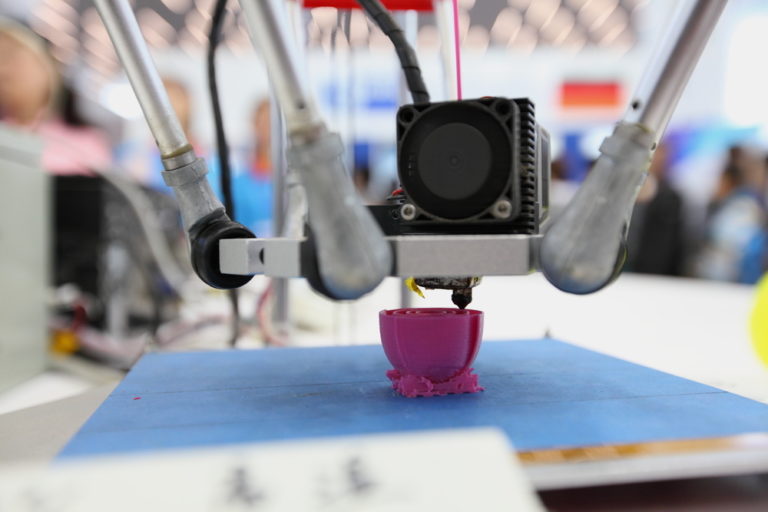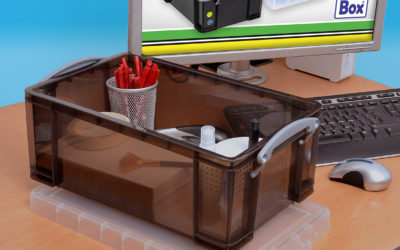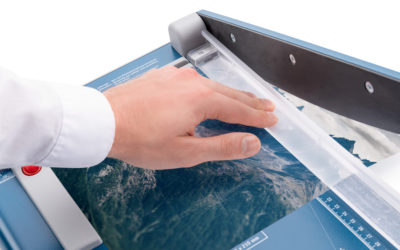When people mention 3D printing, you might think of a small desktop printer that creates simple plastic toys and trinkets.
The reality is that industrial 3D printing – or on-demand manufacturing – is being used to manufacture parts for the jet aircraft that take you on holiday, tailor-made footwear for athletes and even replacement bones and joints for hospital patients. So while 3D printers are unlikely to replace traditional inkjet or laser printers in our homes, they could be the key to enable even the smallest businesses to move into manufacturing.
How does 3D printing work?
It’s not quite as simple as hitting ‘print’ on an image file. Because these printers create three-dimensional objects, you’ll need special software to create a 3D computer model or to read a model that’s been downloaded from websites such as Thingiverse. Once you have your model, the printer can create that object in a choice of materials, ranging from plastic or metal to ceramics or wax. Scientists in the USA and Australia have even managed to print human tissue.
Most domestic 3D printers look more like a microwave oven than your typical inkjet printer. The ST3Di 3D printer, for instance, can print objects measuring up to 200 x 150 x 150 mm in PLA plastic in a choice of nine colours or wood composite. You can see it at work in this video. To understand how you can create 3D prints, you can follow these three steps:
Step 1: The big idea
Open a new document on your computer, drag your hand across your keyboard and press Print and you’ll get a paper printout though perhaps not one you would want to keep. However, 3D printing won’t let you make a shape that easily.
Before you begin, think about the type of object you want to create. If you need some inspiration, there are lots of free suggestions online to kick-start your ideas. Websites like Thingiverse.com offer a huge collection of ready-to-print designs, from toys and models to jewellery and machine components, which you can make with any 3D printer to gain both confidence and experience.
Step 2: Make it happen
Once you have an idea of what you want to make, then it’s time to get to work. 3D printers generally use STL or .stl files. STL stands for ‘stereolithography,’ – the original name for 3D printing when it was invented in the 1980s. To create or modify an STL file, you need computer-aided design or CAD software. These programs don’t need a powerful computer and have been used by architects, designers and engineers for decades, so there are lots of different options.
There are plenty free modelling programmes available to try before you buy. SketchUp offers one of the simplest, easy-to-use interfaces that will have you designing in minutes, along with a massive library of existing designs for you to play around with and make your own. AutoCAD Student lets you learn how to use fully functional professional 3D software – although you’ll have to buy a licensed version when you go pro.
Step 3: Send to print
Once you have a design you’re happy with, you’ll need a 3D printer to digitally render the finished item. But with desktop 3D printers starting from around £1,000 to £1,500, it might be a better idea in the short term to use an online 3D printing bureau and have your final design delivered by mail. Then, once your business is gathering momentum and attracting customers or investors, you can invest in bringing your 3D printing facilities in-house.
3D Printing & Your Business
With so many possible uses, these 3D printers may one day be as common as the office inkjet printer.
There is an obvious parallel with the desktop publishing revolution of the early 1980s. Layout software and affordable printers meant small businesses were able to create their own newsletters and brochures for a fraction of the cost. 3D printing could allow you to do the same (or something like it) for physical objects that would normally mean complex and expensive manufacturing processes.
So what does this mean for small businesses and entrepreneurs? It potentially opens up a world of possibilities. Here are just four ways they could transform your business:
- Test Start-Up Ideas: The cost of creating a prototype for a new idea has always been a major hurdle for entrepreneurs wanting to try out a new product idea and convince potential investors, partners or customers with it. 3D printing makes it easy to produce an actual working model or something close to it. Much more convincing than a concept drawing.
- Create Jewellery, Buttons & Accessories: While you can actually produce these items with a 3D printer, the real benefit is the opportunity to create mock-ups of new variants before having them mass-manufactured. Designers can experiment and test new designs in the real world for a fraction of the cost.
- Produce Personalised Promo Items: Customised pens, mugs and similar promotional items are hardly a new idea, but with 3D printing you can produce bespoke items for everything from holiday gifts to corporate conferences. You could do this with a 3D printer of your own or, more likely, small 3D printing businesses will enter the market specialising in making short run personalised promotional items and giveaways for whoever wants them.
- Create Discontinued Replacement Parts: Machines break down all the time. But if your machine is no longer in production, replacement parts can be scarce or simply unavailable. 3D printers would enable you, or a specialist 3D printing business, to produce these hard to find replacement parts on demand for a fraction of the cost.
Although this is just the beginning of the 3D printing revolution, the impact is already being felt in industries varying from aeronautics to medicine. If you can find the right idea, this could be your opportunity to get a head start on a technology that’s likely to redefine manufacturing for years to come.
Bring your vision to life today and explore our range of 3D printers at Staples.







